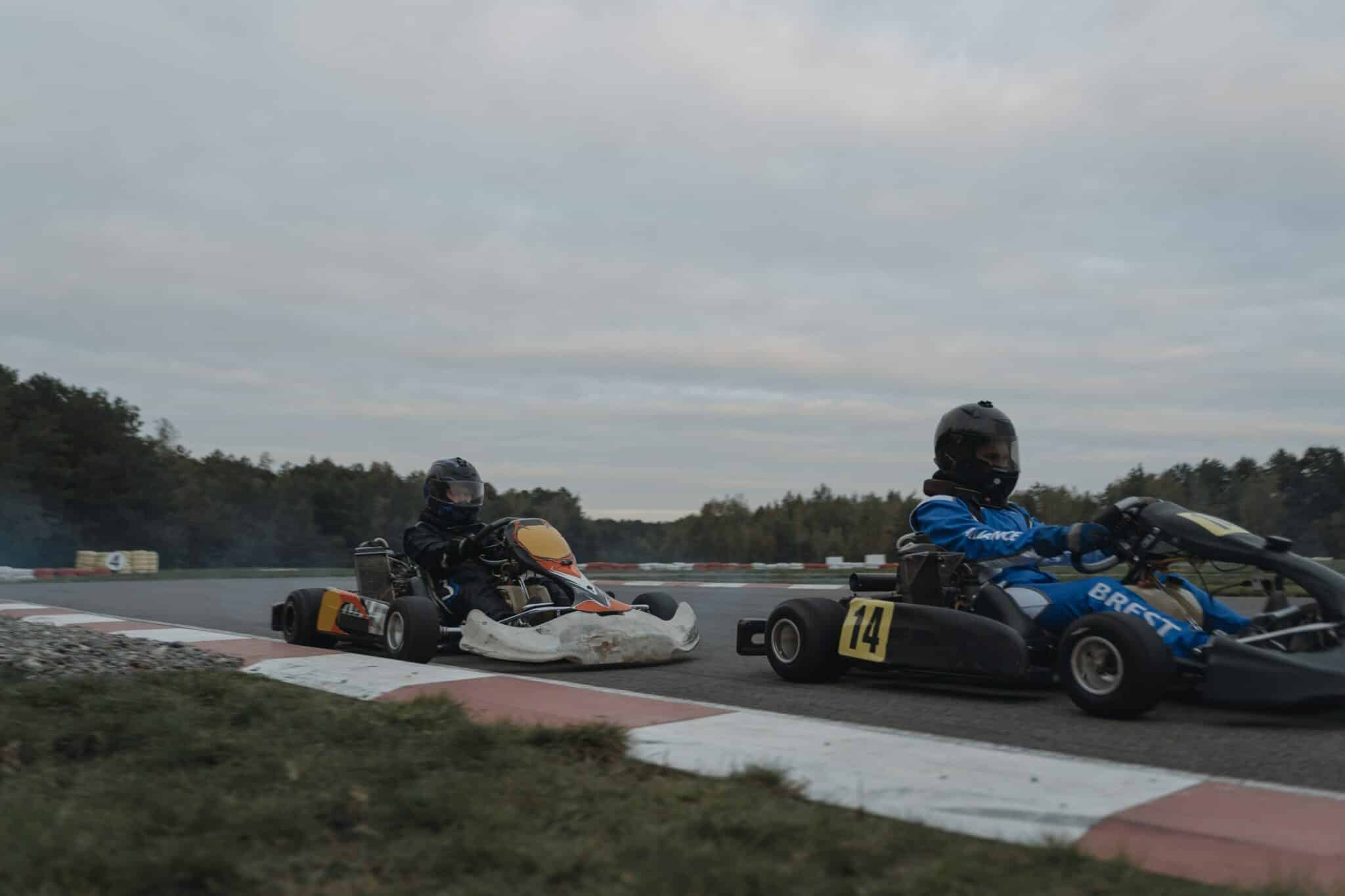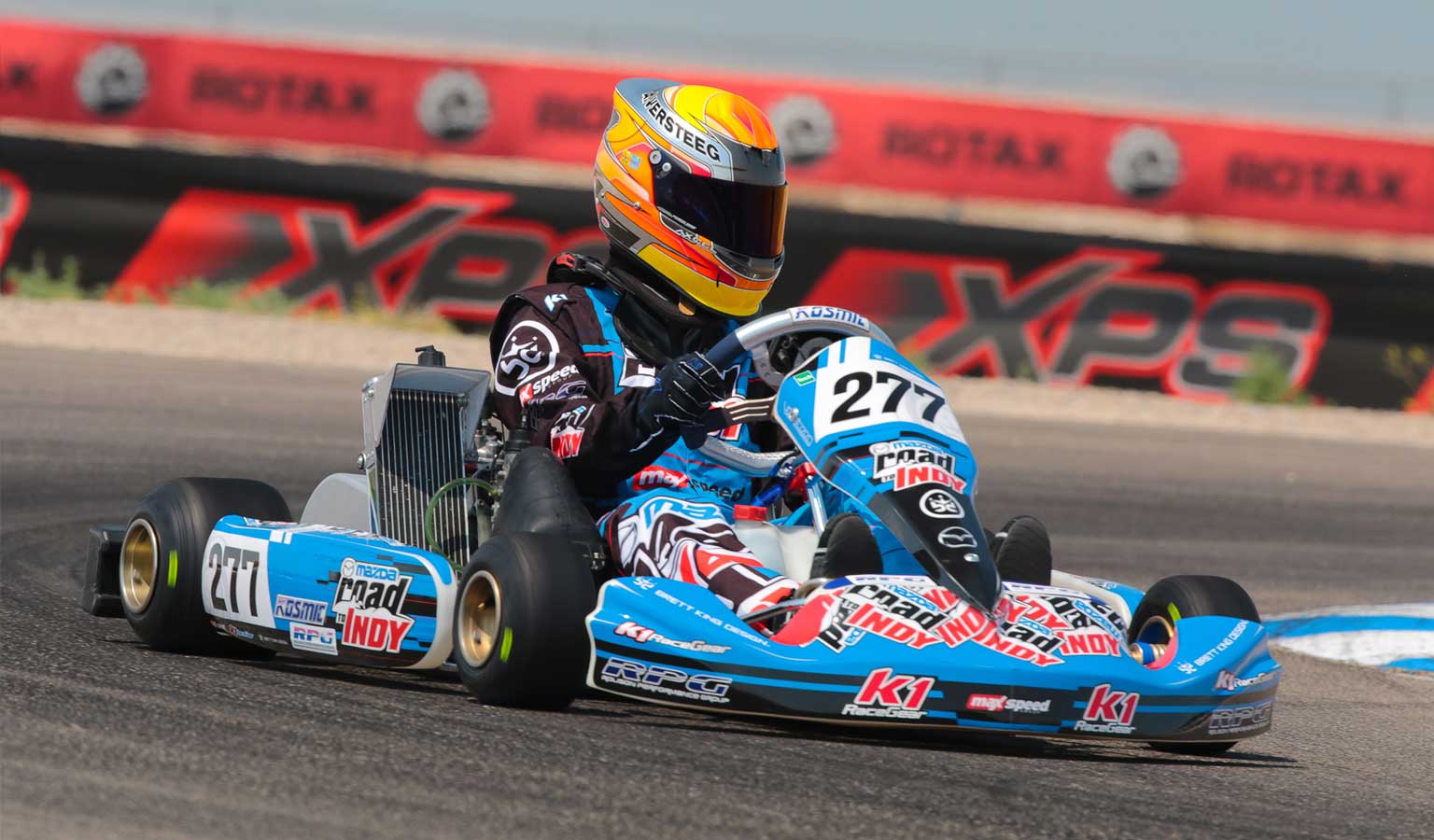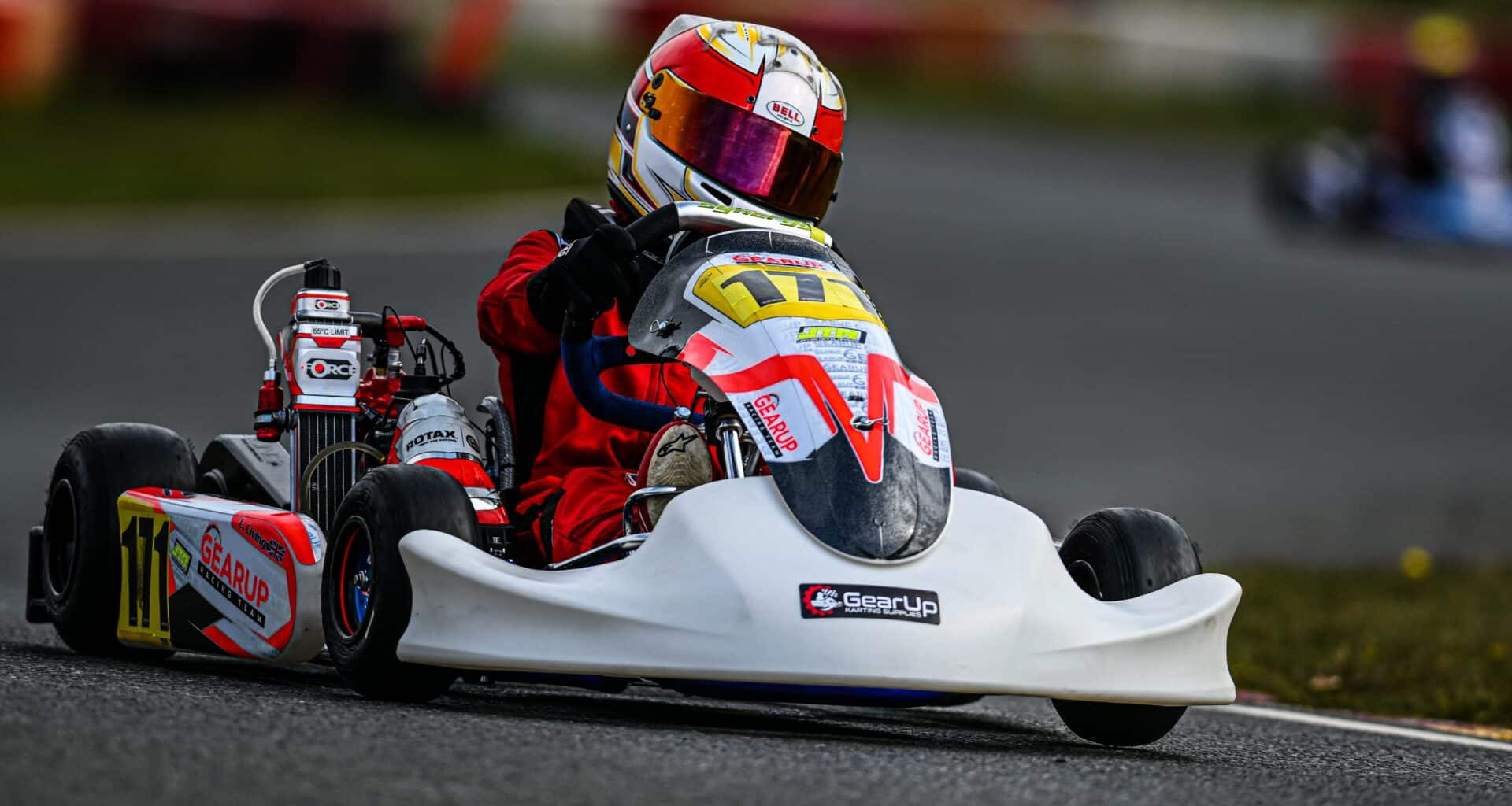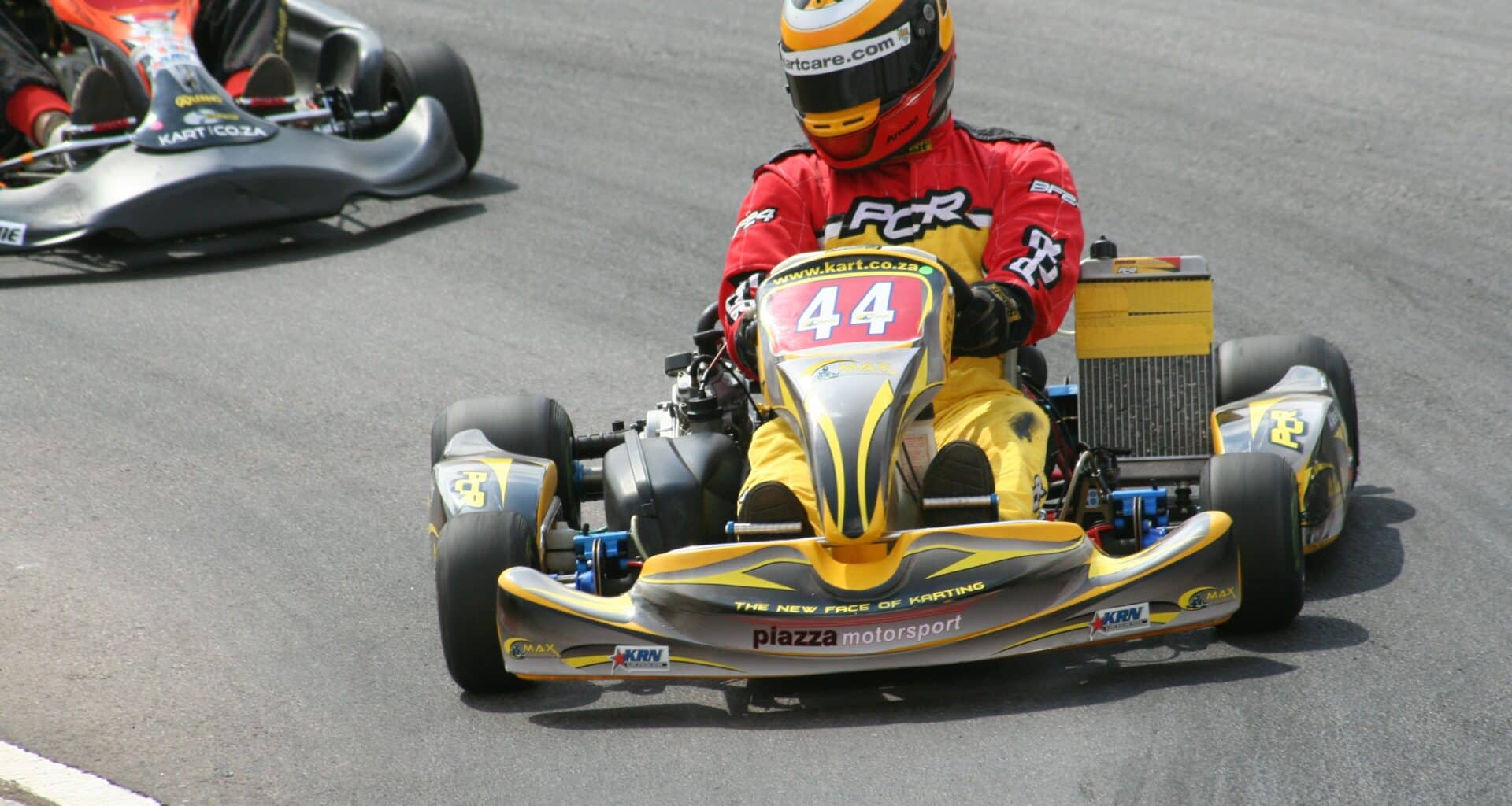In go-kart racing, the racing line refers to the optimal path a driver takes around the track to achieve the fastest lap times. Identifying and mastering the ideal racing line through corners is a key skill for go-kart drivers. Choosing when to brake, the most efficient way to take the apex, and getting a fast exit are all components of optimizing the racing line.
Table of Contents
- 0.1 Significance of GoKart Racing Lines
- 0.2 Components of GoKart Racing Lines: Braking Point, Turn-In Point, Apex, Exit Point
- 1 Types of Corners in GoKart Racing
- 2 Discovering the Perfect Racing Line
- 3 Defensive Vs Aggressive Lines in GoKart Racing
- 4 Skill Enhancement: Efficient Line Management
- 5 Mastering Different Track Forms
- 6 Becoming a Pro: Advanced GoKart Racing Line Strategies
- 7 Frequently Asked Questions about GoKart Racing Lines
- 8 Conclusion
Significance of GoKart Racing Lines
The racing line allows drivers to carry maximum speed through corners by taking the straightest path possible. This allows the kart’s momentum to be preserved, reducing the need for acceleration on corner exits. An efficient racing line results in higher cornering speeds, quicker lap times, and better race results.
Precisely navigating the racing line lap after lap also ensures consistency for the driver. Consistency enables the driver to push to the limits of their ability and the kart’s handling. For overtakes, defending the racing line can also make passing more challenging for competitors.
Components of GoKart Racing Lines: Braking Point, Turn-In Point, Apex, Exit Point

The main components that make up the racing line through corners are:
- Braking point – The initial point of braking when entering a corner.
- Turn-in point – The point at which the kart begins turning into the corner.
- Apex – The innermost point at which the kart passes through the corner.
- Exit point – The point at which the kart begins accelerating out of the corner.
Identifying these key points for each corner allows the driver to optimize their line. Braking too early or too late will compromise entry speed. A poorly positioned apex can lead to a slow exit. Tuning the racing line by adjusting these points can shave valuable time off a lap.
Types of Corners in GoKart Racing
Different types of corners require varied racing line techniques. The shape, angle, and camber of a corner all impact the ideal line. Here are some common corner types in go-karting:
Exciting 90-Degree Corners
90-degree corners allow drivers to carry speed by straightening the kart as early as possible on corner exit. Finding the latest turn-in point to clip the apex is key.
Challenging 180-Degree Corners
180-degree switchback turns challenge drivers to balance entry and exit speed. Early turn-in is needed to make the tight apex. Careful throttle control prevents spin on the exit.
Tricky Hairpins and Chicanes
Hairpins and chicanes require compromise between straight line speed and rotation in the tight sections. Late braking maximizes entry speed, while early throttle helps exit speed.
Complicated Double-Apex Corners
Double-apex corners have a late first apex followed by an early second apex. Maintaining a tight line between the apexes is vital to carry speed.
Discovering the Perfect Racing Line
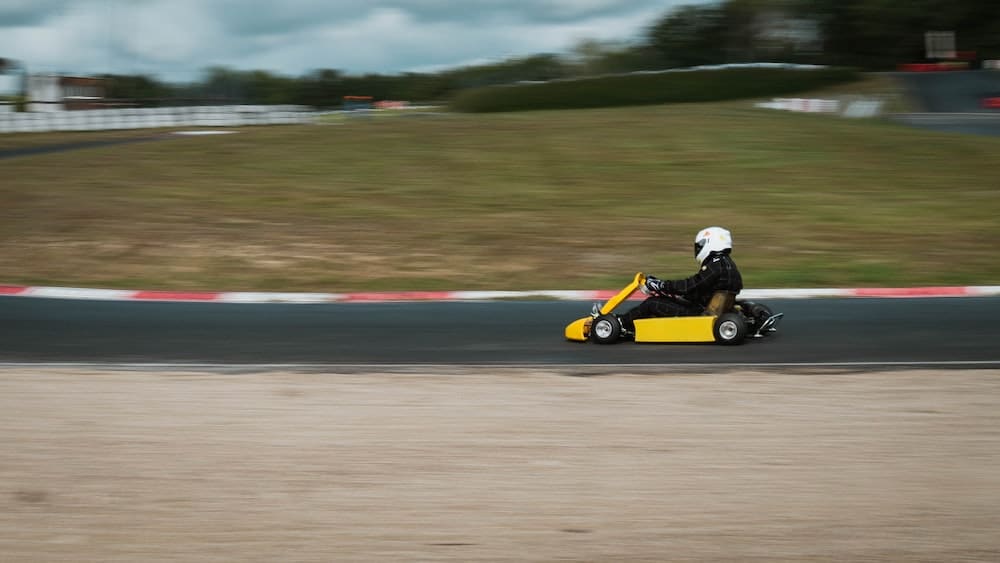
Factors Influencing the Ideal Racing Line
Many factors impact the optimum racing line, including:
- Kart setup – Suspension, weight distribution, tires
- Driving technique – Braking, throttle control, steering input
- Weather conditions – More grip in dry allows later turn-in
- Kart power – More power enables faster exit speeds
The perfect line must be tuned for the specific kart, driver, and conditions. Finding extra grip off line can reveal opportunities for improvement.
Defensive Vs Aggressive Lines in GoKart Racing
Choosing Your Strategy: Attacking or Defending
During races, more factors come into play when choosing racing lines. Is the driver attempting an overtake, or defending position? Two strategies emerge:
- Aggressive line – Sacrifices entry to gain exit speed, setting up overtakes.
- Defensive line – Compromises exit speed to protect position on corner entry.
The attacking driver will brake later and accept a slower apex to get a better exit. The defending kart aims for an earlier apex to block passing on the inside.
Skill Enhancement: Efficient Line Management

Importance of Line Management in GoKart Racing
Maintaining consistency and precision with the racing line lap after lap is critical for performance. Even small deviations from the ideal line can result in time loss. To enhance their skill, drivers must:
- Hit the same braking and turn-in reference points
- Apex within centimeters lap after lap
- Use all the track surface on corner exits
This level of repeatability requires immense concentration and discipline from the driver.
Mastering Different Track Forms
Harnessing Techniques for Chicanes
Chicanes require compromise between the two connecting corners. The first apex must be delayed to allow a faster entry. The second apex is earlier to enable quicker acceleration.
Success in Hairpins: Managing the Racing Line
The line in hairpins uses full track width. Very late braking maximizes entry speed. Turning while trail braking sets up an early apex for fast exit.
Becoming a Pro: Advanced GoKart Racing Line Strategies
Expert Tips and Tricks for Efficient Kart Control
Advanced drivers can further refine their lines with techniques like:
- Adding “curve” to the line to increase minimum speed
- Balancing the kart with subtle brake/throttle overlap
- Using camber changes or ripples for extra rotation
Subtleties like these separate amateur from pro drivers.
Secrets of Quick Bends in GoKart Racing
In linked quick corners, the penultimate apex is delayed to allow earlier power application in the final corner before the straight. This maximizes exit speed.
Frequently Asked Questions about GoKart Racing Lines
Role of Racing Lines in Sporting Performance
The racing line is crucial for performance because it enables the driver to extract the maximum from both themselves and the kart. Consistently optimizing cornering speed, minimum time spent slowing down or accelerating, and total grip utilized are key to lap time reduction.
Accurate Apex Positioning: Why Does it Matter?
An accurate and consistent apex is important because it allows the driver to perfectly sequence the phases of the corner. Adjustments of even a few centimeters in apex position can result in earlier or later application of throttle on exit. This directly impacts acceleration and lap times.
Conclusion
Final Thoughts on GoKart Racing Lines
Mastering the racing line is an essential technique for extracting maximum performance in go-karting. Precisely navigating the fastest path through corners allows quicker lap times. Consistency in hitting the line precisely inch-perfect is needed to exploit its benefits fully. The racing line forms the core of advanced driving skill and racecraft.
Take Racing To Next Level: Mastering GoKart Racing Lines
For any aspiring go-kart driver, learning to identify efficient racing lines and consistently execute them is necessary to improve lap times. Racing lines provide the optimal technique for balancing speed and precision through corners. Mastering this fundamental ability represents a key milestone for those aiming to take their racing to the next level.
